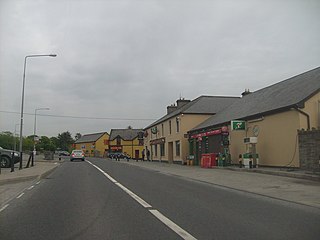
Inagh is a village and civil parish in County Clare, Ireland. It is situated 14 km west of Ennis on the Inagh River. It contains the villages of Inagh and Cloonanaha.
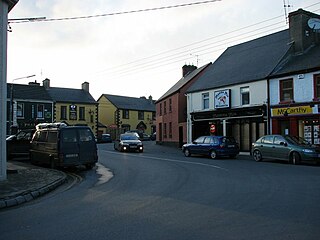
Newmarket-on-Fergus, historically known as Corracatlin, is a town in County Clare, Ireland. It is 13 kilometres from Ennis, 8 kilometres from Shannon Airport, and 24 kilometres from Limerick.
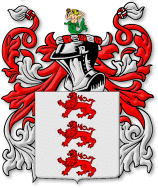
The name McInerney is of noble Irish origin where it is found in the modern Irish form of Mac an Airchinnigh and in the old and literary forms of Mac an Oirchinnigh and Mac an Oirchindig. The pronunciation of Mac an Oirchinnigh led the name to be sometimes anglicised as McEnherheny in Irish documents from the 16th–19th centuries. The name translates to "son of the erenagh" in Irish, literally meaning "son of the Lord of church lands". Airchinneach may in turn derive from the twin components of air ("noble") and ceann ("head"), therefore meaning a 'noble-head' or 'Lord', denoting its aristocratic status in medieval Ireland. The coat of arms is three red lions passant, and the motto is Veritas, meaning "Truth". In some places, the motto can be found as Vincit Veritas, meaning "Truth Conquers", or "Truth Prevails".

Bunratty is a village in County Clare, Ireland, near Bunratty Castle. It is connected by the N18 road to Limerick and Galway. The Raite river defines the parish's eastern boundary and flows into the Shannon Estuary, which defines the southern boundary.
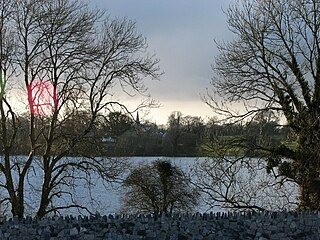
Kilnasoolagh is a civil parish in County Clare, Ireland, and a townland within that parish. Church records mention the parish in 1256.
Newmarket-on-Fergus is a parish in the Roman Catholic Diocese of Killaloe. It is centred on Newmarket-on-Fergus, County Clare in Ireland.
Luchtigern was an early Christian leader who was active in Ireland in the 6th century, and has been recognized as a saint by the Catholic Church.
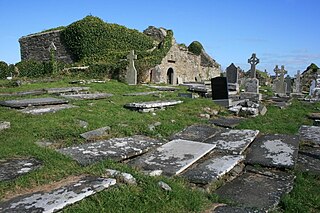
Kilmacrehy, sometimes also Kilmacreehy, is a civil parish in County Clare, Ireland. The ruins of the old parish church lie near the coastal village of Liscannor, which is also a part of the parish.
Clonloghan is a civil parish of County Clare, Ireland, located 21.7 kilometres (13.5 mi) by road northwest of Limerick, just north of Shannon.
Bunratty Lower is a barony in County Clare, Ireland. This ancient unit of land division is in turn divided into fourteen civil parishes.
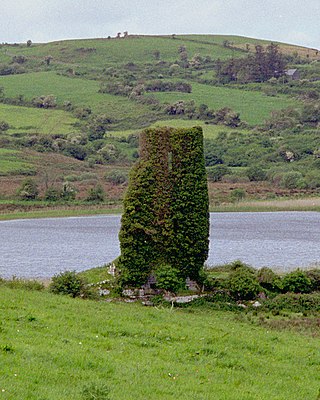
Rath is a civil parish in the barony of Inchiquin in County Clare, Ireland.
Drumline is a civil parish of County Clare, Ireland, located about 20 kilometres (12 mi) northwest of Limerick, just north of Shannon.
Kilconry is a civil parish of County Clare, Ireland, located about 25 kilometres (16 mi) northwest of Limerick, west of Shannon on the estuary of the River Shannon. The main village in the area is Ballycalla/Ballcally and it contains the Shannon Golf Club and Shannon Airport.
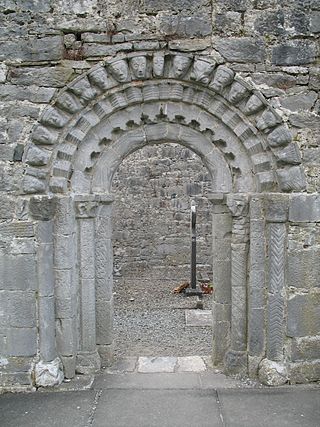
Dysart and Ruan is a Catholic parish in County Clare, Ireland. It covers the civil parishes of Ruan and Dysert, and includes the village of Ruan, which holds the parish office. The parish contains the ruins of the 12th century St. Tola's Church, part of Dysert O'Dea Monastery.
Killeely is a civil parish that lies partly in County Clare and partly in County Limerick in Ireland.

Kilmaleery is a civil parish in County Clare, Ireland. It is part of the Catholic parish of Newmarket-on-Fergus.

Gleninagh or Glaninagh is a civil parish in County Clare, Ireland. It lies in the extreme northwest of the Burren, on the south of the mouth of Galway Bay. It is known for the well-preserved L-plan Gleninagh Castle, a 16th-century tower house. The parish also contains the lighthouse on Black Head.

Inagh and Kilnamona is a parish of the Roman Catholic Diocese of Killaloe in County Clare, Ireland. It is mostly coterminous with the civil parishes of Inagh and Kilnamona that lie to the west of the county town of Ennis in the ancient barony of Inchiquin. The parish contains two churches and an oratory.
Doora Church, also known as St Brecan, Doora, is a ruined church in the civil parish of Doora, County Clare, Ireland. It may date back to 500 AD, although it has been extensively reworked since then.
Carntemple, once known as Kilbrecan, is a ruined church in the civil parish of Doora, County Clare, Ireland. It may date back to 480 AD. Little remains except the massive foundations.











